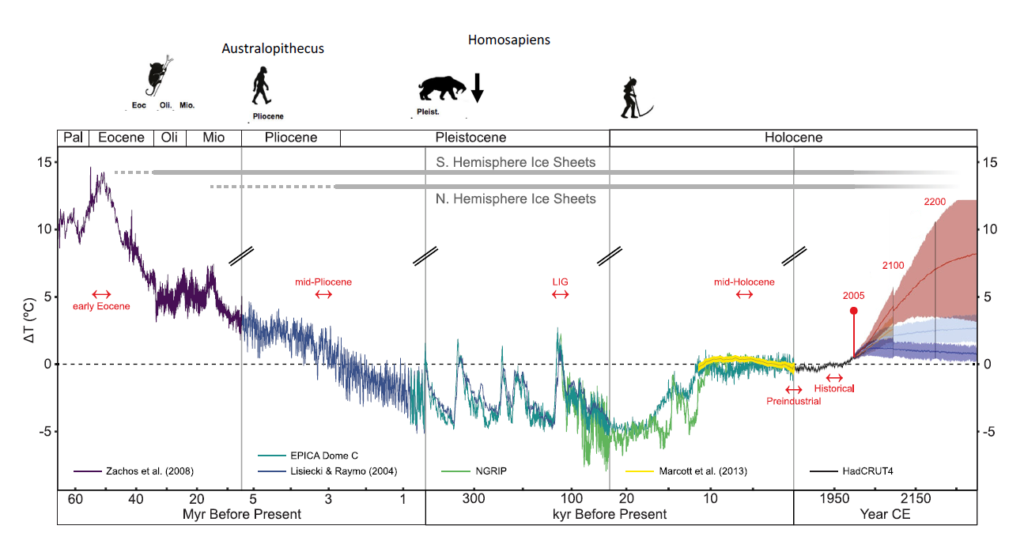Why is climate change a problem if climate has constantly changed in the past?
This is a very good question. Climate has always changed. The problem is that now human actions are changing the climate in ways that it would not have changed under just natural conditions. Through increasing greenhouse gases in the atmosphere, humans have increased Earth’s temperature very rapidly. Rapidly increasing temperatures mean that fire seasons are getting longer, so large-scale fires are becoming ‘more normal’. Drought is also likely to become more common in some regions and floods more common in other regions. It is much harder time trying to understand what is likely to happen with rainfall compared with temperature, though. These rapid changes in climate mean many plants and animals don’t have time to adapt and many ecosystems are showing signs of collapsing. In many cases, these changes will also likely lead to an increase in ‘pest species’ (e.g. fruit fly).
The rate of temperature increase over the past 70 or so years has been alarming. Climate model projections suggest that in less than a century –if we continue doing what we are doing and don’t change –temperatures may be as high as they were millions of years ago.
The image below shows how temperature changed over geological time, from around 60 million years before today. In the image, Myr means millions of years and Kyr means thousands of years. The modern end shows how climate models suggest the temperature will change into the future up to 2250. Climate models use a lot of physics and maths and what we know about how climate works to project into the future. When scientists look at the models, they consider what global temperatures might look like if humans took slightly different courses of action:
- The dark blue line/band after 2020 shows what models suggest will happen to global temperatures if we made a really strong effort to severely limit our greenhouse emissions into the atmosphere.
- The light blue line/band shows what the models suggest will happen to temperature if we make some efforts to greenhouse gas emissions.
- The red line/band shows what the models suggest will happen to temperature if we keep doing what we’re doing.

At the moment, we really aren’t doing much to reduce greenhouse gas emissions that are making temperatures rise very quickly. This suggests that if we want to know what conditions might be like in 2200, we have to look all the way back to what is known as the ‘palaeocene-eocene thermal maximum’ around 50 million years ago. This was a period long before homo-sapiens (our own species) existed. Life on Earth was very very different. There were no ice caps and many of the ecosystems we see today didn’t exist. If, however, we take urgent action to address climate change, the ‘nearest’ similar climate is the Last Interglacial period (LIG in the diagram) which was ‘only’ around 126,000 years ago.
Conditions and life forms at either of these times were not like those we see today. If we change the climate to this extent, we will see some land (like a lot of Pacific islands and low lying coastal areas) disappear under water, terrible devastation of coastal cities (including in Australia and Tasmania), and much human suffering. We will also lose many important ecosystems on which we rely for food. As thing becomes much more difficult we can expect increased conflict as people fight over diminishing resources. So, climate change has really significant implications. Not just for humans, but all species currently on the planet. The pace of change means that the ability to adapt is limited for most species.











